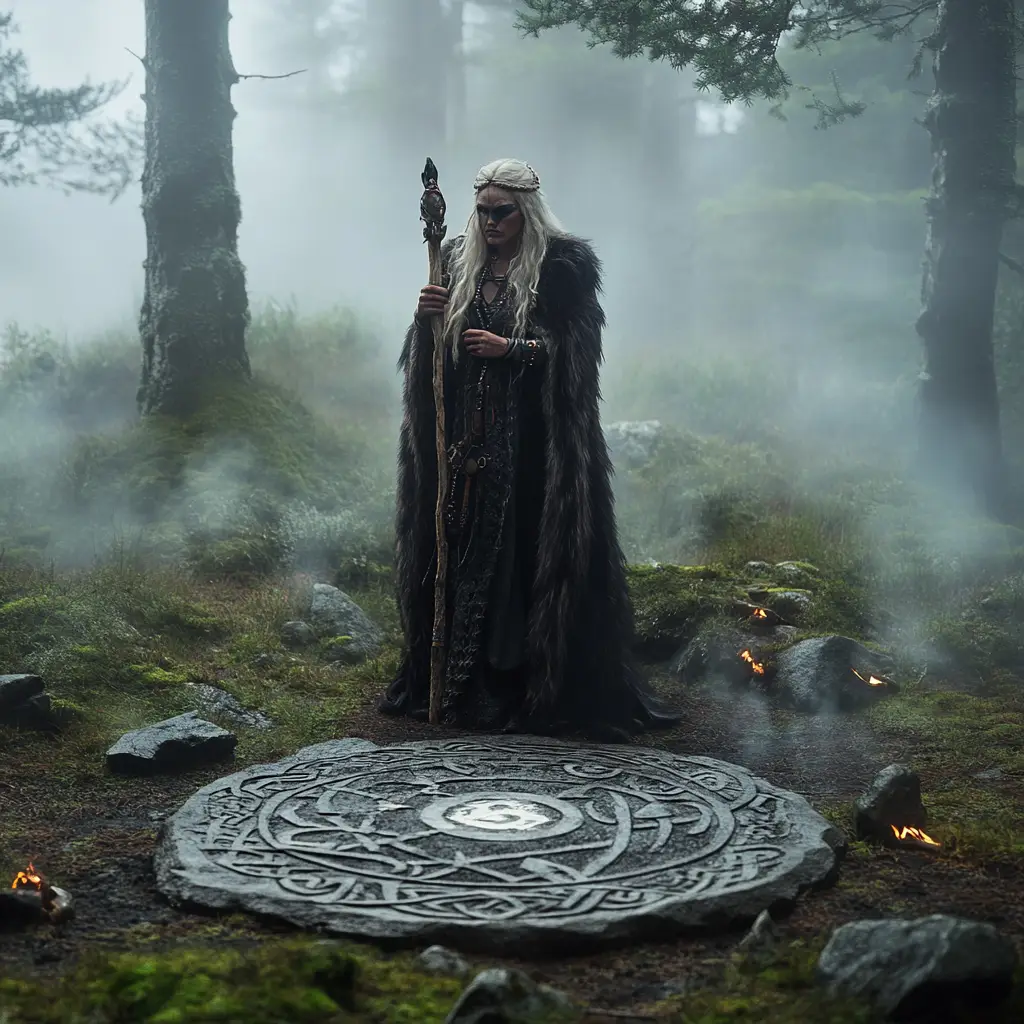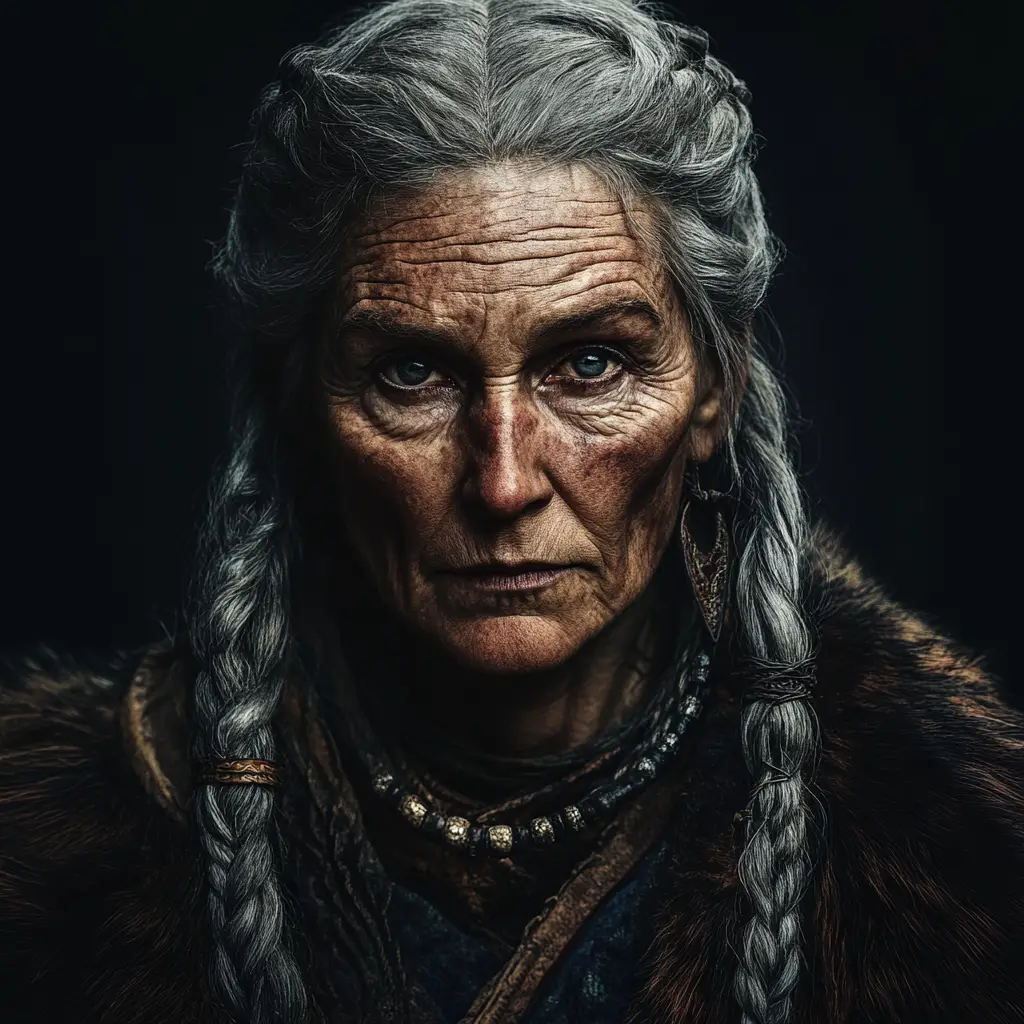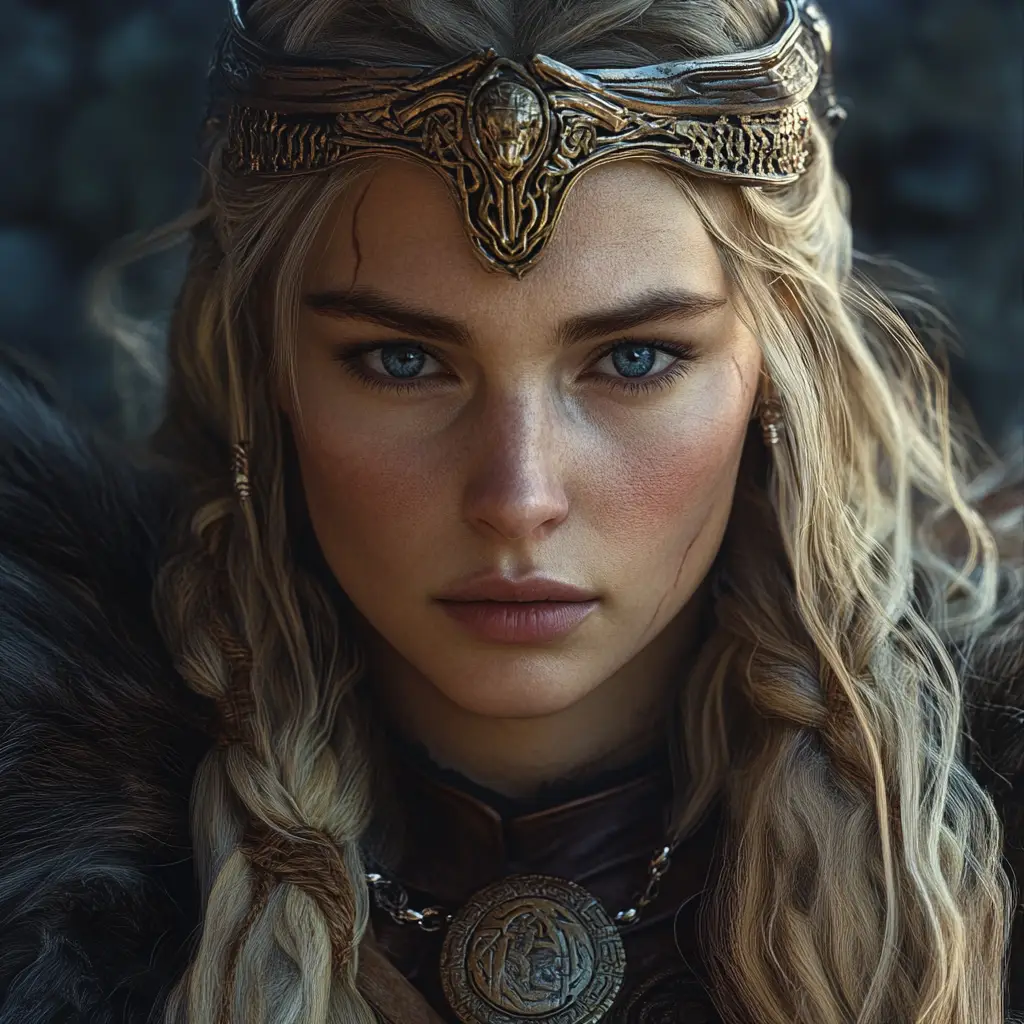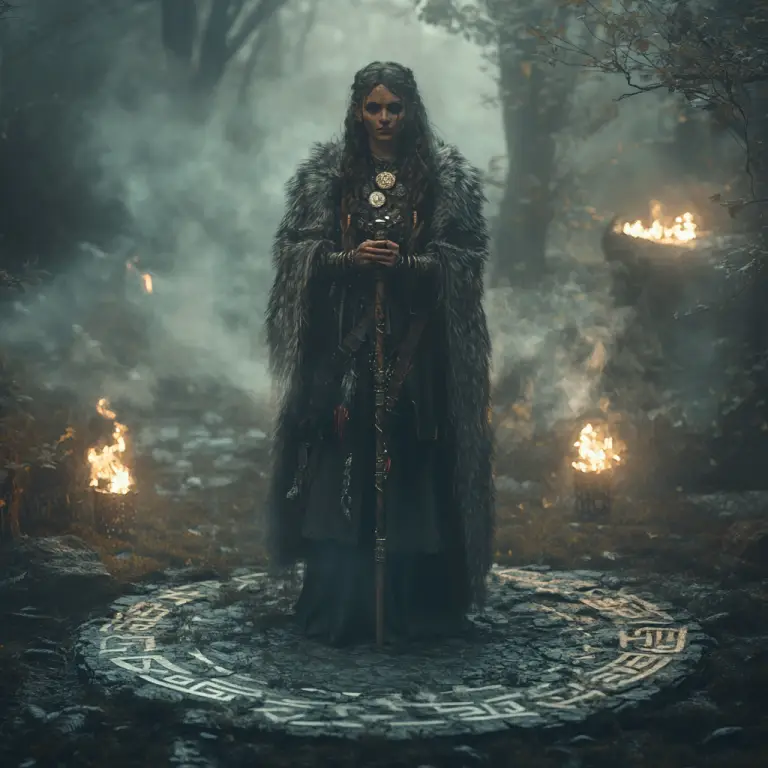A Viking völva was a type of shaman or seeress in Norse culture, often regarded as possessing deep mystical powers and spiritual wisdom. The völva held a key role in Viking society, performing ritualistic ceremonies, offering prophecies, and serving as intermediaries between the gods and humans. Their practices were intertwined with Norse magic, particularly seiðr, a form of divination and fate manipulation.
Here’s a deeper look at the role of a völva:
Key Attributes
Spiritual Connection: Völvas were thought to be able to communicate with the spiritual realm, including gods, spirits, and the deceased, through their magical practices.
Magic & Divination: They used runes, chanting, and ceremonial tools (like staffs or wands) in their rituals to access knowledge beyond the physical world. The practice of seiðr was often associated with völvas, allowing them to manipulate the future or predict events.
Ceremonial Role: They were called upon to perform significant rituals, such as blessings, healing ceremonies, or to influence the outcomes of battles. Their presence was believed to bring divine favour or protection.
Trance States: To perform their rituals, völvas often entered altered states of consciousness, sometimes through chanting, drumming, or the consumption of certain substances. These trance states allowed them to journey into other realms and communicate with the gods.
Cultural Respect & Fear: Völvas were highly respected for their abilities, but also feared due to the power they wielded. They were seen as both wise and dangerous figures in Viking society.
Gender and Social Role
Primarily Women: Although both men and women could practice seiðr, völvas were typically women. They were often older, experienced, and had a deep understanding of the mystical arts.
Travelling Shamans: Völvas were not tied to a single village or community. They often travelled from place to place, offering their services to different clans and chiefs. Their movements, sometimes with ceremonial staffs or other items, were integral to their role as spiritual guides.
Symbolism and Tools
Staff or Wand: The völva often carried a staff or a wand, symbolizing her power and role as a spiritual leader. This tool was often used during rituals or ceremonies.
Cloaks and Headgear: In depictions and historical accounts, völvas were sometimes shown wearing distinctive cloaks or headgear. These symbols marked their status and role in the community.
The völva’s importance in Viking culture was more than just religious—it was an integral part of the social and spiritual fabric, bridging the earthly realm and the divine. Their presence helped guide and protect the Viking people, and they played a role in ensuring the community’s harmony with the supernatural forces around them.



